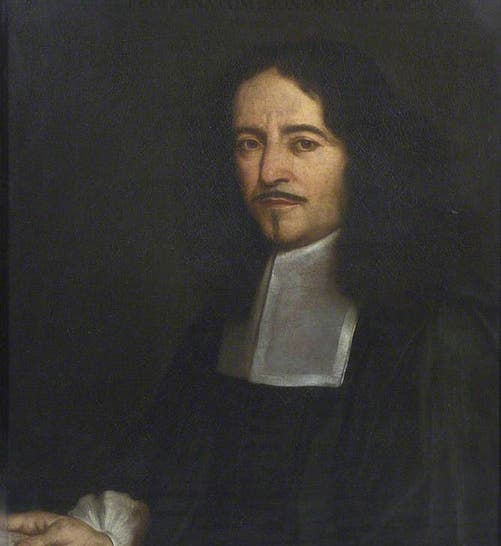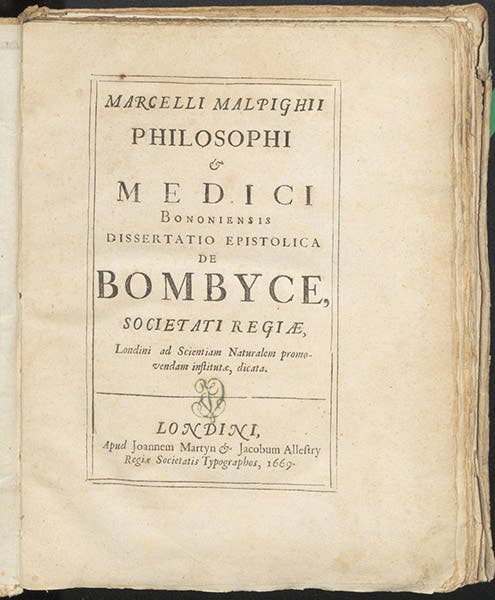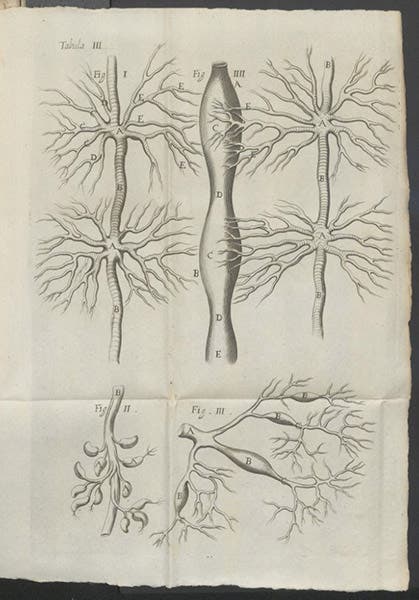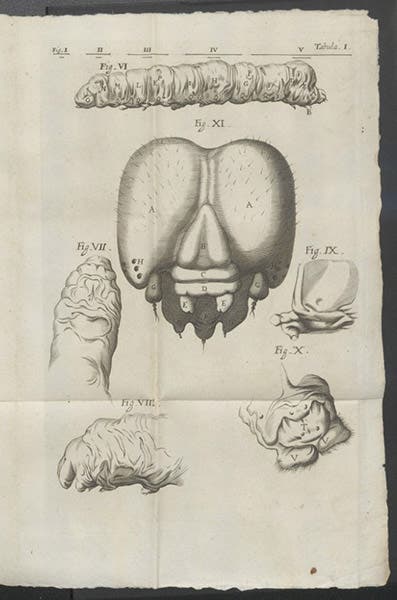Scientist of the Day - Marcello Malpighi
Marcello Malpighi, an Italian microscopist, was born, or perhaps baptized, on Mar. 10, 1628. Malpighi is noted for his many discoveries with the microscope: capillaries, taste buds, the alveoli in the lungs, and a whole host of other microscopic body structures. Social historians, however, are more intrigued by the way Malpighi published his findings. In December of 1667, Malpighi (in Bologna) received a letter from Henry Oldenburg, secretary of the Royal Society of London, asking, essentially, "What’s up?", and wondering if Malpighi would like to communicate any of his discoveries to the Society. Malpighi just happened to be finishing a treatise on the dissection of silkworms, and so he sent it off to Oldenburg. Oldenburg was impressed, and so were other members of The Royal Society (except possibly Robert Hooke, who might have been jealous), and the Society underwrote the publication of De bombyce (On the Silkworm) in 1669. The Society spared no expense, for De bombyce is quite a handsome publication, on large paper, with fold-out engravings of the details of silkworm innards, several of which we show here (third and fourth images).
When Malpighi finished a much larger work, the Anatome plantarum, he sent that off to Oldenburg as well, and again the Royal Society underwrote the expense of publishing the book in 1675 and 1679. We show the titlepage of the Anatome (fifth image, just below); the engaved vignette is the crest of the Royal Society, with its motto: “Nullius in verba” ("having no master"). Even Malpighi's Opera, which appeared in 1686-87, was published in London. It is not often that a scientist of one county is effectively adopted and sponsored by an organization housed in another, over such a long period of time.
We have all of Malpighi’s works mentioned above in our History of Science Collection, but De Bombyce is the only one we have digitized so far. But with this entry on Malpighi, we have almost completed the cycle of the great early microscopists: Jan Swammerdam, Francesco Redi, Antoni van Leeuwenhoek. We have done Robert Hooke, but not his Micrographia (1665) – we will try to accomplish that on Hooke’s next birthday, this coming July 18. And it would not be a bad idea to do another entry on Malpighi, to discuss and illustrate the Anatomy of Plants and perhaps his Opera.
Not surprisingly, the best portrait of Malpighi is in the Royal Society in London, and we opened with that image. There are quite a few other portraits, including this engraving in the National Portrait Gallery in London. There is a statute in Crevalcore, his birthplace, in greater Bologna, which we show you (last image, just above), and another at the University. You can also view a handsome memorial of Malpighi above his tomb in the Church of Santi Gregorio e Siro in Bologna. Dr. William B. Ashworth, Jr., Consultant for the History of Science, Linda Hall Library and Associate Professor emeritus, Department of History, University of Missouri-Kansas City. Comments or corrections are welcome; please direct to ashworthw@umkc.edu.











